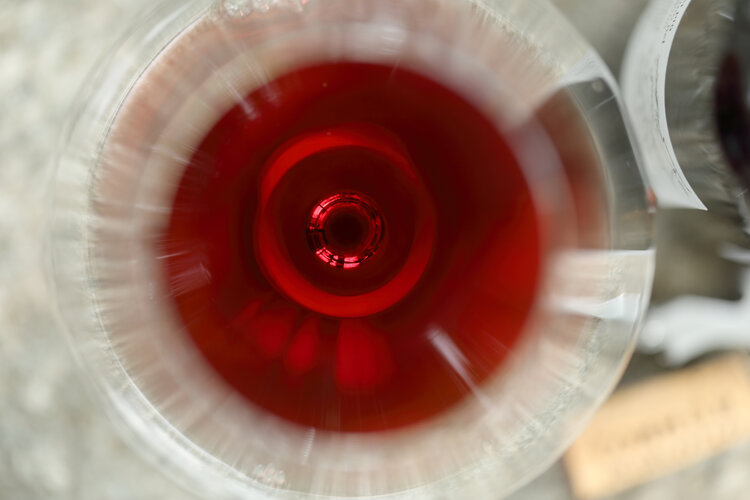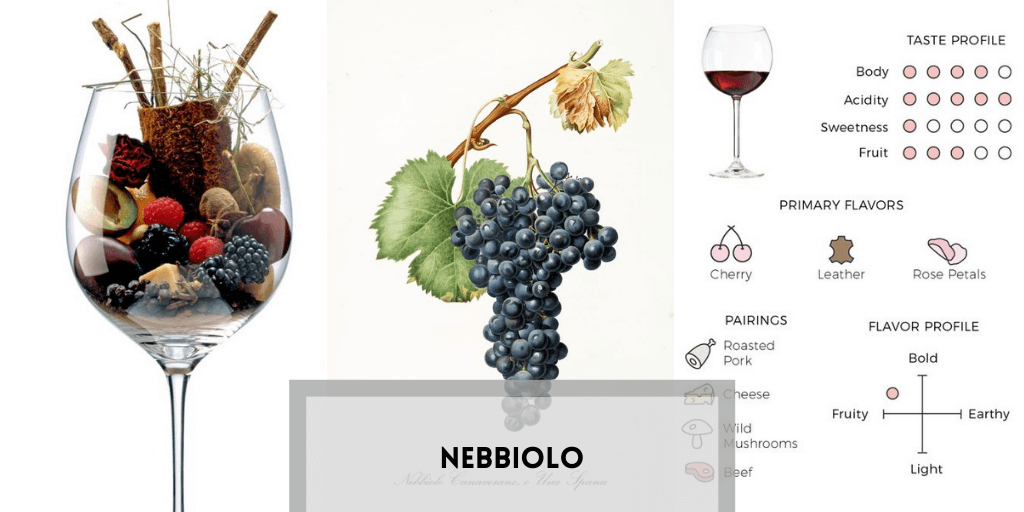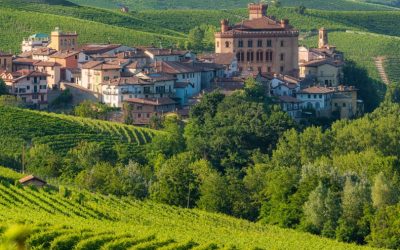The Ultimate Barolo Tasting Guide: Ideal Age, Pairings, and Serving Tips
Welcome to the majestic world of Barolo, a wine that has long held the title of “the king of wines and the wine of kings.” Celebrated globally for its depth, richness, and extraordinary capacity for ageing, Barolo isn’t merely a wine—it’s an experience. But like any complex subject, the journey towards appreciating Barolo isn’t as simple as uncorking a bottle.
Produced exclusively in the Piedmont region of Italy from the Nebbiolo grape, Barolo is a robust, sophisticated red wine with a history and set of traditions as rich as its flavor profile. It’s not enough to merely taste Barolo; one must understand it. But how old should an ideal Barolo be? What foods reveal its nuances most effectively? How should it be served to best unlock its myriad flavors? These are some of the questions we’ll delve into in our comprehensive guide to understanding and appreciating Barolo.
From the vine-covered slopes of Piedmont to your dining room, we’ll take you on an exciting journey into the heart of Barolo. Whether you’re a seasoned connoisseur or a wine enthusiast seeking to broaden your horizons, our guide will equip you with the knowledge you need to make the most of your Barolo tasting experience.
Barolo Tasting Guide

The Barolo wine, often referred to as “the king of wines”, is famed for its complexity, robust character, and potential for aging. A wine’s ideal age is subjective and depends on personal taste; however, most Barolo wines reach their peak between 10 to 20 years. The tannins soften over time, and the flavors become more complex and harmonious.
Understanding how to properly drink Barolo is key to fully appreciating its exquisite taste. It’s typically served at room temperature, ideally between 16-18°C (60-64°F). Pour it into a large, tulip-shaped glass to help concentrate the aromas. It’s advised to decant Barolo for at least an hour before serving to let it breathe, enhancing its unique flavors. Contrary to some beliefs, Barolo isn’t typically served cold; its full profile is better expressed at a slightly warmer temperature.
Barolo Tasting Ideal Age
Food pairing plays a crucial role in enhancing the Barolo tasting experience. The robustness of Barolo pairs well with equally rich and hearty dishes. Traditional Piedmont dishes like truffles, risotto, and braised beef are excellent choices. Even without food, Barolo’s complexity can make it a stand-alone star, provided it’s enjoyed slowly to appreciate its evolving flavors.
Barolo is a wine renowned for its ageing potential. This characteristic stems from the high tannins and acidity of the Nebbiolo grape, which allows it to develop complex flavors over time. But what is the ideal age for a Barolo to be enjoyed at its best? This question is a cornerstone in understanding the allure of Barolo.
While it is challenging to pinpoint a “perfect” age for all Barolo wines due to their diverse styles and terroir differences, general guidelines can assist wine lovers in making an informed choice. Typically, traditional-style Barolos start showing their best from around 10-15 years, while modern-style Barolos, crafted for earlier drinking, can be enjoyed from 5-10 years.
However, this is just the beginning of our exploration of Barolo’s ageing prowess. In our guide, we will delve deeper into the intricacies of ageing Barolo, the factors that influence its ageing potential, and tips to identify wines with superior ageing ability. Join us as we unravel the mystique of Barolo’s ideal age and enhance your tasting experience.
Pairing Barolo: An Artful Blend of Flavors and Aromas.
Barolo wines, known for their full-bodied nature, bold tannins, and pronounced acidity, are considered gastronomic wines. They offer a wide range of pairing options due to their robust character and complex flavor profile. However, pairing a wine as rich and complex as Barolo requires a bit of insight into its flavor notes and the dishes that can bring out its best.
Whether it’s the traditional Piemontese cuisine or more international fare, certain dishes align exceptionally well with Barolo’s distinct palate. From rich meat dishes, hearty pasta to strong, mature cheeses, the options are plentiful and intriguing.
In our guide, we will explore the art of pairing Barolo with food, considering both traditional and innovative combinations. We will provide practical tips on how to match the wine’s characteristics with suitable dishes to elevate your culinary experience.
Preparing for a Barolo Wine Tasting Experience in Cellars
Experiencing a Barolo wine tasting in the cellars of Piedmont, Italy, requires some preparation. It is essential to understand the rich, full-bodied Barolo wine made from Nebbiolo grapes before visiting. Dress appropriately for cool cellars, plan and reserve your visit in advance, avoid strong flavors before the tasting, and stay hydrated. Don’t hesitate to ask questions during your tasting and remember to savor the unique experience of being immersed in one of Italy’s most prestigious wine regions. Here’s how you can prepare yourself for this unparalleled experience:
1. Understanding Barolo Wine: Before your visit, familiarize yourself with the basics of Barolo. Made from the Nebbiolo grape, Barolo is a rich, full-bodied wine known for its complex bouquet and longevity. Understanding the basics about the grape varietal, aging process, and characteristic tasting notes will enhance your tasting experience.
2. Dress Comfortably: Cellars can be cool, even during summer. It’s a good idea to dress in layers. Comfortable shoes are also a must, as you might be standing for an extended period or walking on uneven surfaces.
3. Plan Ahead: Reserve your spot well in advance, especially during peak season. Some wineries offer tours and tastings by appointment only, so make sure to schedule your visit.
4. Cleanse Your Palate: Avoid strong flavors that might linger and affect your palate before your tasting, such as coffee or spicy food. Drink plenty of water to stay hydrated and cleanse your palate between different wines.
5. Take Notes: Consider carrying a notebook to jot down your impressions of each wine. This will also serve as a lovely memento of your experience.
6. Ask Questions: Don’t hesitate to ask questions. The winemakers and staff are usually passionate about their craft and are more than willing to share their knowledge with you.
7. Savor the Experience: Remember, wine tasting is not just about the taste of the wine itself, but the overall experience. Take the time to appreciate the atmosphere of the cellar, the smell of the wine barrels, and the beauty of your surroundings.
By preparing in advance, you’ll be able to make the most of your Barolo wine tasting experience in the cellars. Enjoy this immersive journey into the world of one of Italy’s most prestigious wines.
Best Barolo Cellars and Winery
Discover the best Barolo Wine Tours.
| Winery and Official Website | Year of Establishment | Notable Offerings |
|---|---|---|
| Marchesi di Barolo | 1807 | Guided tours and tastings |
| Poderi Einaudi | 1897 | Intimate look into the world of Barolo |
| Damilano | 1890 | Traditional family estate |
| Fontanafredda | 1878 | Historic cellar visits |
| Bartolo Mascarello | – | Tastings by appointment |
| Paolo Scavino | 1921 | Vineyard walks, cellar visits |
| GD Vajra | 1972 | Scenic view of Barolo villages |
| E. Pira e Figli – Chiara Boschis | – | Pioneering women producer’s wines |
| Giuseppe Rinaldi | – | Tastings by appointment |
| Roberto Voerzio | – | High-quality Barolo tastings by appointment |
| Ceretto | 1937 | Modern winemaking, beautiful art installations |
| Conterno Fantino | 1982 | Eco-friendly winery, stunning views |
| Cordero di Montezemolo | – | Cellar tours, vineyard tours |
| Vietti | 1919 | Wide range of top-rated wines |
| Aldo Conterno | 1969 | Traditional Barolo production methods |
| Giacomo Conterno | 1908 | Tastings by appointment |
| Brovia | 1863 | Tours and tastings by appointment |
| Mascarello Giuseppe e Figlio | – | Traditional style wines |
| Elvio Cogno | 1990 | Cellar and vineyard tours |
| Giuseppe Mascarello | – | Single-vineyard Barolo tastings by appointment |
FAQs About Barolo Wine Tasting Experience: Serving Tips
erving Barolo at its best involves more than just popping the cork and pouring it into a glass. The way you serve Barolo can significantly impact the wine-drinking experience, bringing out its intricate flavors and aromas to the fullest.
In this guide, we will take a closer look at the best practices for serving Barolo wine. We’ll cover essential aspects such as the ideal serving temperature, the right type of glass to use, and the importance of decanting. Moreover, we’ll provide handy tips on how to treat older vintages, which require special care due to their age and delicacy.
Whether you’re a wine enthusiast or just venturing into the world of Barolo, this guide will equip you with the knowledge to serve and enjoy this iconic Italian wine like a pro.





